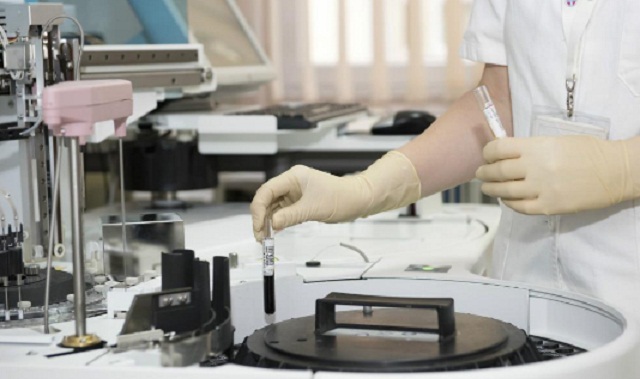
Miami, United States | AFP | A precision cancer treatment that targets rare genetic mutations that exist in about 5,000 people in the United States instead of the tumor’s location in the body has shown success in three-quarters of patients, researchers said Wednesday.
The medicine, called larotrectinib, is made by Loxo Oncology of Stamford, Connecticut and was granted breakthrough therapy designation by the US Food and Drug Administration in 2016.
Taken orally once or twice a day, it interferes with an on-switch for cancer growth caused by an acquired genetic defect, known as tropomyosin receptor kinase (TRK) fusions.
“This is truly a magic bullet for our patients with TRK-positive cancer,” said co-author Leo Mascarenhas, deputy director of the Children’s Center for Cancer and Blood Diseases at Children’s Hospital Los Angeles.
Infants, children, adolescents and adults with a range of cancers — including salivary gland, infantile fibrosarcoma, thyroid, colon, lung, gastrointestinal, melanoma and other cancers — were included in the study published in the New England Journal of Medicine.
The 55 patients ranged in age from four months to 76 years, and entered the trial from 2015 to 2017. They suffered from either locally advanced cancers or tumors that had spread to other parts of the body.
Three quarters of patients enrolled responded to the therapy, typically within two months of starting the regimen.
“A total of 13 percent of the patients (seven patients) had a complete response, 62 percent (34) had a partial response,” said the report.
Another 13 percent (seven) had stable disease. Nine percent (five) had progressive disease, and four percent (2) could not be evaluated because their conditions deteriorated or they withdrew from the study.
“No patients discontinued treatment due to drug-related side effects,” said the report.
An initial analysis of the trial — carried out at more than two dozen sites around the world — was released at a major US cancer conference in June 2017.
If larotrectinib gains approval for wider use, it could treat thousands of patients with these forms of cancer around the world.
Researchers don’t know exactly how many people could be helped by the treatment globally, since current screening practices often do not test for this particular genetic flaw.
“Screening strategies that include assays with the ability to detect TRK fusions will be needed in order to identify patients who may benefit from larotrectinib,” said the report.
TRK fusions are found in a range of cancer types but tend to be unusual in common cancers, occurring in between 0.2 percent and three percent of cases.
However, in some rare cancers, the fusions are present in nearly every case, researchers say.
“In this series of studies, larotrectinib had rapid, potent and durable anti-tumor activity in children and adults who had solid tumors with TRK fusions without regard to patient age, tumor tissue and fusion status,” said co-principal investigator David Hong, professor of investigational cancer therapeutics at The University of Texas MD Anderson Cancer Center.
 The Independent Uganda: You get the Truth we Pay the Price
The Independent Uganda: You get the Truth we Pay the Price



